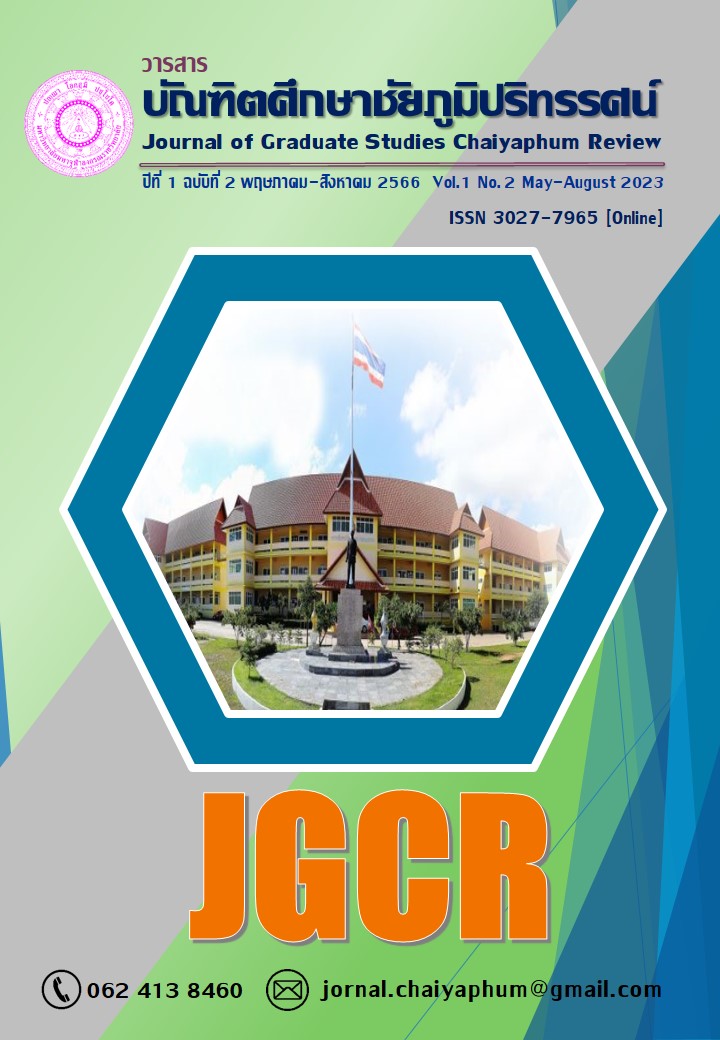Application of the principles of Aparihaniyadhamma to enhance participation in Thai communities.
Abstract
The purpose of presenting this article is to apply the principles of Aparihaniyadhamma to strengthen participation in the Thai community. It was found that the Buddhist concept places importance on participation in every human activity, no matter how small it is. No matter how big or small the matter is, humans will continue to participate in such activities regularly in order to create prosperity for that human group and create growth in many other areas because humans give importance to activities and have Unity among the group, as the Lord Buddha said in the Aparihānidhamma principles to the leaders in the Vajjī region. If there is a lot of unity, there will be no bad omen of decline and it will also create peace. Happening in that region, it consists of 7 elements that can be applied as follows: 1. Regularly meet together. The community can set the time frame for monthly meetings in advance. 2.Unison: End the meeting and do various activities together. By assigning participation roles to everyone 3. Do not prescribe things that have not been prescribed, do not overthrow things that have been prescribed, and adhere firmly to the principles that were originally laid down. By being open to receiving additional opinions regarding various conditions by adhering to meeting resolutions. 4. Who is an adult? Being the president must be respected and respected as something worth listening to. The president must demonstrate democracy. 5. Protect women, children, the elderly, and the underprivileged to be safe. The community must create conditions to allocate welfare to those people. Along with encouraging people to take part more. 6. Paying homage to the pagoda. The community must continually create beliefs and traditions in worshiping the sacred things of that community in order to instill the same practices in the youth and the public. And 7. Providing righteous protection, protection, and protection to good and virtuous people. The community must praise Honor the elderly or citizens who have good practices according to the established criteria.
References
เขมานันท์ ขบวนฉลาด. (2546). การประยุกต์ใช้หลักอปริหานิยธรรมเพื่อการบริหารจัดการขององค์การบริหารส่วนตำบลประทัดบุ อำเภอปราสาท จังหวัดสุรินทร์, วารสารมหาจุฬาคชสาร, 12 (1), 140-141.
ธมฺมจรถ. (2552). ปกิณกธรรม : ธรรม 7 ประการ สำหรับผู้ปกครองบ้านเมือง. [ออนไลน์]. แหล่งข้อมูล : https://mgronline.com/dhamma/detail/9520000052337 [1 ธันวาคม 2565].
ณัฐณภรณ์ เอกนราจินดาวัฒน์, ดำเกิง อัศวสุนทรางกูร, สะพรั่ง สุขเวชชวรกิจ และตติยาภรณ์ ประสาทกุล. (2565). สิทธิเด็กและสตรี: ยุติความอยุติธรรม. วารสารรัฐศาสตร์ มหาวิทยาลัยราชภัฏสวนสุนันทา. 5 (1), 1-8.
ทนงศักดิ์ คุ้มไข่น้ำ. (2540). หลักการพัฒนาชุมชน. ขอนแก่น: มหาวิทยาลัยขอนแก่น.
นรินทร์ชัย พัฒนาพงศา. (2538). แนวทางแนวการให้ประชาชนมีส่วนร่วมในการพัฒนาชนบท. พิมพ์ครั้งที่ 2. กรุงเทพฯ: สำนักงานคณะกรรมการวิจัยแห่งชาติ.
นรินทร์ชัย พัฒนาพงศา. (2546). การมีส่วนร่วม หลักการพื้นฐาน เทคนิคและกรณี ตัวอย่าง. กรุงเทพฯ: 598 Print.
นิรันดร์ จงวุฒิเวศย์. (2527). กลวิธีแนวทางวิธีการส่งเสริมการมีส่วนร่วมของประชาชนในงานพัฒนาชุมชน การมีส่วนร่วมของประชาชนในการพัฒนา. กรุงเทพฯ: มหาวิทยาลัยมหิดล.
พระธรรมปิฎก (ป.อ. ปยุตฺโต). (2546). พุทธธรรมฉบับปรับปรุงและขยายความ. พิมพ์ครั้งที่ 11. กรุงเทพฯ: โรงพิมพ์มหาจุฬาลงกรณราชวิทยาลัย.
พระครูปลัดไพฑูรย์ เมธิโก (มหาบุญ). (2558). อปริหานิยธรรม : สันตภาพสู่สังคมไทย. วารสารกระแสวัฒนธรรม. 16 (29), 80.
พระมหายุทธพิชัย สิริชโย และธิติวุฒิ หมั่นมี. (2561). การบริหารงานตามหลักอปหานิยธรรม. วารสารสมาคมศิษย์เก่ามหาวิทยาลัยมหาจุฬาลงกรณราชวิทยาลัย. 7 (2), 146.
วรางคณา วัฒโย. (2540). การจัดการองค์กรท้องถิ่น. กรุงเทพฯ: พิทักษ์อักษร.
วิรัช วิรัชนิภาวรรณ. (2530). ปัญหาและอุปสรรคที่สำคัญของการพัฒนาชุมชน: ประชาชนข้าราชการและผู้นำรัฐบาล. กรุงเทพฯ: สำนักพิมพ์โอเดียนสโตร์.
สำนักงานจังหวัดสระบุรี. (2561). สรุปประเด็นปัญหาและความต้องการของประชาชนเชิงพื้นที่. สระบุรี: สำนักงานจังหวัดสระบุรี.
สำนักงานคณะกรรมการกองทุนหมู่บ้านและชุมชนเมืองแห่งชาติ. (2546). การมีส่วนร่วม. กรุงเทพฯ: สำนักงานสภาสถาบันราชภัฎและทบวงมหาวิทยาลัย.
อรทัย ก๊กผล และฉัตรระวี ปริสุทธิญาณ. (2553). บันทึกเรื่องเด่นรางวัลพระปกเกล้า 52 ด้านความโปร่งใสและส่งเสริมการมีส่วนร่วมของประชาชน. กรุงเทพฯ: สถาบันพระปกเกล้า.
สภานิติบัญญัติแห่งชาติ. บทบาทของประธานหรือผู้นำการประชุมที่ดี. [ออนไลน์], แหล่งข้อมูล : https://web.senate.go.th/km/data/secreatary/Meeting_Leader.doc [19 ธันวาคม 2565].
ไอ เอ็ม บุ๊คส์. (2551). ปฏิวัติการประชุม. กรุงเทพฯ: ไอ เอ็ม บุ๊คส์.
Arnstien, S.R. (1969). “A Ladder of Citizen Participation”. Journal of the American Institute of Planners. 35 (4), 216-224.
Cohen J.M & Uphoff, N.T. (1981). Rural Development Participation: Concept and Measure for Project Design Implementation and Evaluation: Rural Development Committee Center for international Studies. New York: Cornell University Press.
Putti. (1987). Work values and organizational commitment: A study in the Asian context. Human Relations.
United Nations. (1981). Yearbook of International Trade Statistics. United Nations UN Press.
William, E. (1976). Electoral Participation in a Low Stimulus Election. Rural Development.
Downloads
Published
How to Cite
Issue
Section
License

This work is licensed under a Creative Commons Attribution-NonCommercial-NoDerivatives 4.0 International License.



